Change language: Dutch (Nederlands) ![]()
Today a lot of tourists are wondered about the presence of an old grandstand along the freeway near Berlin. It is a remnant of the old AVUS, a street circuit on the freeway between Berlin and Wannsee.
The construction of the AVUS
The AVUS in Berlin is without a doubt one of the most curious race tracks of the past. AVUS stands for “Automobil Verkehrs und Übungs Straße” which means in English “Automobile Traffic and Practice Road”. In fact it was an experimental “Autobahn” (freeway) which could be also used as race track.
The construction of the AVUS in Berlin started in 1913 at the initiative of Emperor Wilhelm II. The out broke of the First World War stopped the works. They continued in 1919 and the first race was held in September 1921.
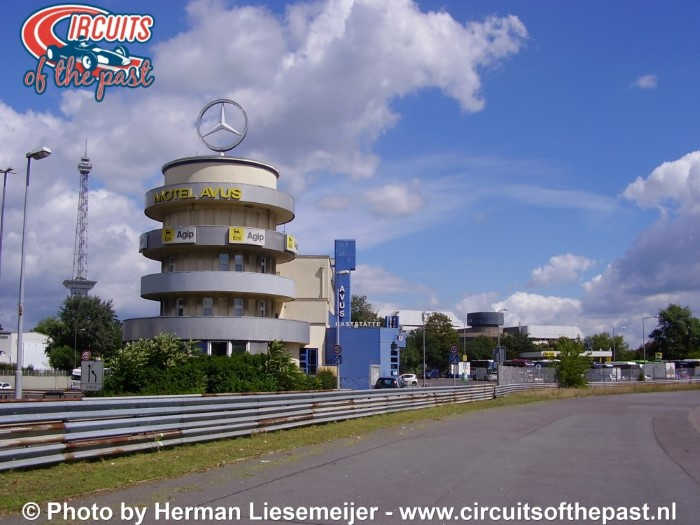
The layout of the AVUS
It will be hard to imagine a more simple race track design than the lay-out of the AVUS. Two five Mile long straights connected with loops on both sides.
But the AVUS is not an ordinary race track. In fact is was the Worlds first motorway! During the week it was used as toll way for the traffic from Berlin to Wannsee and Potsdam. And during the weekend there could be organized race events. For racing and testing there were two loops constructed, the “Nordkurve” (North Curve) and the “Südkurve” (South Curve), both about 5º banked.
Just like the traffic in Germany, the racing cars also drove right at the Motorway part of the AVUS. Which made that the circuit was driven anticlockwise. The length of the race track was 19.573 km (12.160 Miles). There was also a shorter version for motorcycle races from 8.3 km (5.157 Miles). This version did not use the Southern loop.
The banking of the AVUS
A reconstruction came in 1936 when a new road was planned to the exposition site next to the AVUS. The Nordkurve should make place for this new road, but to compensate the AVUS a new Nordkurve was constructed. This new corner was paved with bricks and had a banking of 43,6º! This made the AVUS the fastest race track in the World. Also a new office building (Now the AVUS motel) and an new main grandstand were built.
In the spring of 1937 the renewed AVUS was ready and the first race was held in may. That race was won by Hermann Lang in his Mercedes with an average speed about 260 km/h (160 Mph) with top speeds about 380 km/h (225 Mph). These records would stand for more than three decades!
In 1938 the AVUS was connected with the expanding web of German Motorways. For this the Südkurve was demolished. There were plans to build a high banked Südkurve, but the out broke of the Second World War in September 1939 stopped these plans.
After the war racing on the AVUS continued in 1951 at the shorter version from 8.3 km (5.157 Miles), which was already used before the war for motorcycle races. In state of a long loop, the Southern turning point was now a flat corner which looked like a bus stop.
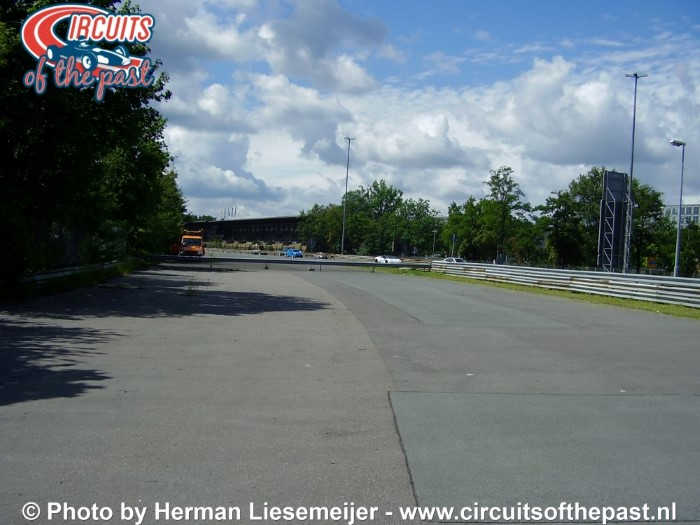
German Grand Prix
For political reasons the 1959 German Grand Prix was held at the AVUS to give the people in the Russian occupation zone the opportunity to visit the race (NB: The Berlin wall was built in 1961). As a gesture to the East German fans they could pay their ticket in East Marks.
This should be the only official Formula 1 Grand Prix at the AVUS (In 1954 there was also a Formula 1 race at the AVUS which was not counting for the championship). The Saturday before the Grand Prix Frenchman Jean Behra was killed during a supporting sports car race.
He slid on the banked Nordkurve, flew over the top and crashed into the remains of the foundation of an anti-aircraft gun from the Second World War. During the Grand Prix on Sunday everything went well and both heats were won by the British driver Tony Brooks in his Ferrari. It was the only Formula 1 race ever which was driven in two heats.
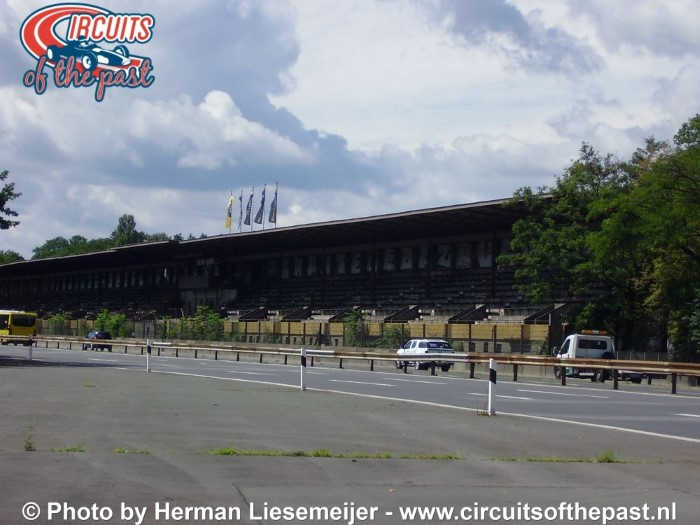
Changes to the layout
Because the high banked Nordkurve was found too dangerous the corner was demolished and replaced by a flat version in 1967. From 1975 on, the AVUS was just twice a year closed for racing. The rest of the year it was the motorway who connected West Berlin to West Germany.
In 1989 the track was shortened to 4.879 km (3.032 Miles). The Southern corner was reduced to an additional piece of asphalt at the turning point. From 1984 to 1995 a combined event from the German Touring car Championship (DTM) and the German Formula 3 Championship was the annual high at the AVUS.
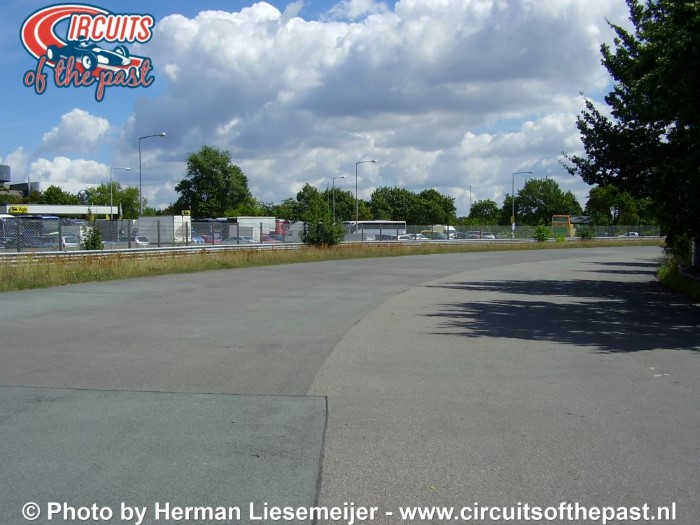
In 1992 new safety measurements were applied. To reduce speeds the straights were shortened again and the South corner was just a gap in the guardrail to turn. There was also a chicane created in front of the North loop.
The end of the AVUS
Despite the new safety measurements a lot of crashed happened during the touring car events (most of them caused by rude driving) who are feeding the discussions about the safety of the street course. In September 1995 the British driver Kieth O’dor spun at the entrance of the Nordkurve during a Super Touring car Cup (STW) race. Frank Biela hits him in the door on the drivers side. He was passed away the next morning in the hospital.
From that moment the track was criticised more and more. New safety measurements were required for the 1996 race. A second chicane was added just before the Nordkurve and all bumps were removed. But the end of the AVUS street circuit came closer when a new permanent race track was built not far from Berlin.
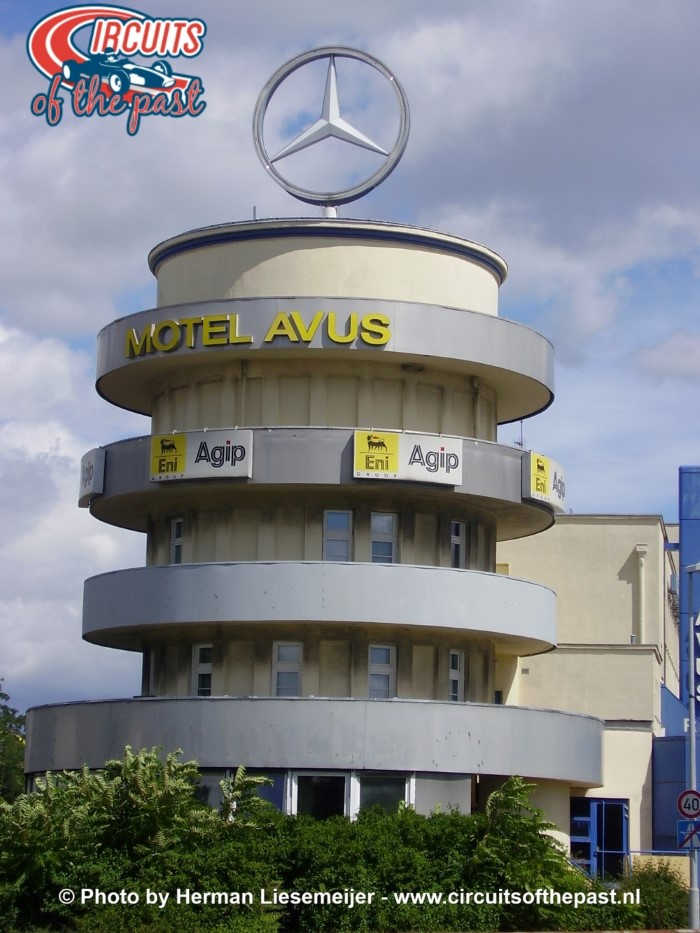
Close to Berlin a brand new modern circuit complex, containing an oval, a road circuit and a test track. This complex called the Lausitzring, also known as Eurospeedway, was opened in 2000 and was a good alternative for the AVUS with his boring lay out and all the safety problems.
On the first of May 1999 the AVUS street circuit said goodbye with a great event. All historic cars who ever drove at the historic race track were taken from their museums for a final meeting at this most remarkable street circuit.
The AVUS today
When you travel today on the A115, you still see the old grandstand along the freeway near Berlin. And also the old control tower with the former office building are still on the AVUS Parking. These buildings are now National Monument.
The tower and offices are now in use as a motel. According to rumours the grandstand was sold in 2006 to an investor who want to build an Autosalon and a restaurant inside. However, by my most recens visit in 2016 none of these plans were realized. The old grandstand was abandoned. However, in 2017 they finally started with the reconstruction works of the grandstand.
See also my article about my most recent visit to the AVUS >>
©Text & photos: Herman Liesemeijer
Subscribe to our YouTube Channel: youtube.com/circuitsofthepast


